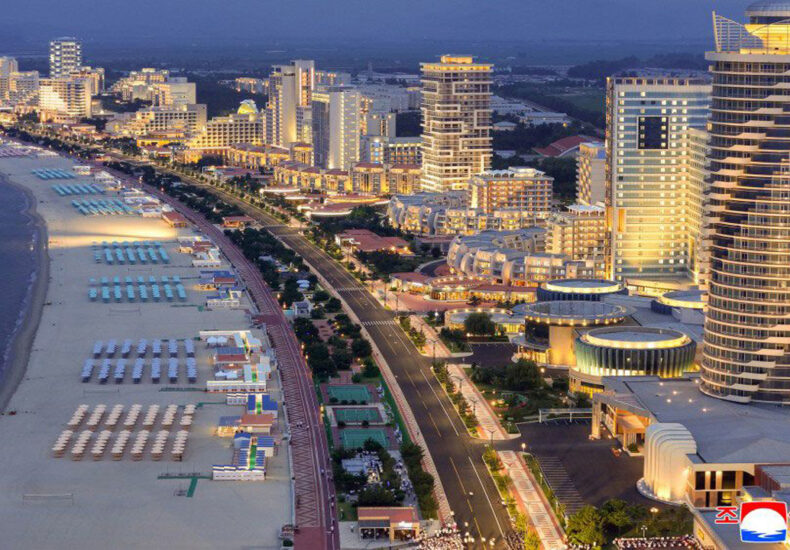
North Korea’s Luxury Resort Opens for Tourism but Struggles to Attract Visitors
Fundacion Rapala – On July 1, 2025, North Korea launched the Wonsan Kalma luxury resort on its east coast. Officials promoted it as a symbol of modern development and a new destination for international tourism. The resort features pastel-colored hotels, beachfront promenades, and a large water park, all designed to host thousands of guests.
A Resort That Feels Empty
Despite the grand opening, Wonsan Kalma barely draws tourists. Russian traveler Darya Zubkova revealed that only 15 foreigners stayed there during her week-long visit in July. She shared videos on social media showing empty cabanas, idle buses, and vast dining halls serving only a dozen guests.
Read This : Latest Grock Build in Mobile Legends You Need to Master Right Now
Strict Entry Rules Limit Attendance
North Korea currently allows only Russian tourists to enter the resort. Authorities still block Chinese and Western visitors. Even for Russians, regulations remain strict. Zubkova explained that foreign guests must stay in the international zone, separated from domestic tourists, with limited access to certain facilities.
Zoning That Restricts Experiences
The resort divides into domestic and international zones. Ironically, domestic tourists can move more freely, while foreigners face restrictions. For example, Zubkova and her group could not use the water park because it belonged exclusively to the domestic section. This rigid zoning reduces the appeal of the experience for foreign travelers.
Exceptional Service Despite Low Numbers
Although the resort lacks crowds, staff members work hard to impress. Hotel employees greeted guests with bows, doctors checked body temperature, and attendants sprayed disinfectant. When Zubkova requested balcony chairs and a clothes dryer, staff bought them immediately and delivered them to her room. She admitted that the service exceeded her expectations.
Videos Show Contrasting Reality
Zubkova’s Instagram videos highlight the paradox: massive facilities but almost no visitors. The clips show empty resort buses, deserted restaurants, and wide beaches without crowds. Yet, the service staff tried to maintain high hospitality standards, creating a surreal mix of luxury and emptiness.
From Missile Site to Seaside Resort
The history of Wonsan Kalma makes the transformation even more striking. Authorities once used the site for missile testing. Today, they market it as a seaside resort with villas, hotels, restaurants, and shopping centers. The government hopes to replace its militaristic reputation with tourist-friendly development.
Capacity vs. Reality
Designed to host up to 20,000 visitors, the resort stretches across four kilometers of beachfront. It includes multiple hotels, retail spaces, and leisure facilities. In practice, however, only a tiny fraction of that capacity ever gets filled. This gap between ambition and reality raises concerns about the resort’s future.
Challenges to Attracting Tourists
Several issues explain the lack of visitors. Ongoing international sanctions, political isolation, and travel restrictions discourage global tourists. Moreover, foreigners who do visit cannot move freely, making the trip less appealing than competing destinations in Asia. Even with excellent facilities, strict controls overshadow the experience.